
Vik: Iceland's Coastal Gem
Discover Vik, Iceland's coastal gem, where black sand beaches, towering sea stacks, and breathtaking landscapes await. Perfect for nature lovers and adventurers alike.
Vik, a small village on Iceland's southern coast, is a hidden treasure waiting to be discovered. Nestled between majestic cliffs and the Atlantic Ocean, this scenic spot offers a unique blend of natural beauty and Icelandic culture. Its black sand beaches, formed from volcanic ash, create a striking contrast against the white foam of the crashing waves, making it a photographer's paradise. The village is home to the iconic Reynisdrangar sea stacks, towering basalt columns that rise from the ocean like mythical giants. Legend has it that these formations are trolls turned to stone by the sunlight. The nearby Reynisfjara beach is one of the most beautiful non-tropical beaches in the world, where you can explore caves and marvel at the geological wonders. Vik is not just about stunning landscapes; it is also a gateway to various adventures. From glacier hikes on the nearby Myrdalsjokull glacier to exploring the cascading Skogafoss and Seljalandsfoss waterfalls, there is no shortage of outdoor activities. The village itself is charming, with cozy cafes, local artisan shops, and warm Icelandic hospitality. Whether you are seeking tranquility or thrill, Vik offers a perfect blend of both.
Local tips in Vik
- Visit the black sand beach early in the morning to avoid crowds and capture the best photos.
- Dress in layers, as the weather can change rapidly. Waterproof clothing is essential.
- Try local Icelandic cuisine at one of the village's cozy restaurants. Don't miss out on the fresh seafood.
- Join a guided tour for glacier hikes to ensure safety and get the most out of your experience.
- Check out the Vik i Myrdal Church for panoramic views of the village and coastline.
- Plan your visit between May and August for the best chance to see puffins on the cliffs.
Vik: Iceland's Coastal Gem
Vik, a small village on Iceland's southern coast, is a hidden treasure waiting to be discovered. Nestled between majestic cliffs and the Atlantic Ocean, this scenic spot offers a unique blend of natural beauty and Icelandic culture. Its black sand beaches, formed from volcanic ash, create a striking contrast against the white foam of the crashing waves, making it a photographer's paradise. The village is home to the iconic Reynisdrangar sea stacks, towering basalt columns that rise from the ocean like mythical giants. Legend has it that these formations are trolls turned to stone by the sunlight. The nearby Reynisfjara beach is one of the most beautiful non-tropical beaches in the world, where you can explore caves and marvel at the geological wonders. Vik is not just about stunning landscapes; it is also a gateway to various adventures. From glacier hikes on the nearby Myrdalsjokull glacier to exploring the cascading Skogafoss and Seljalandsfoss waterfalls, there is no shortage of outdoor activities. The village itself is charming, with cozy cafes, local artisan shops, and warm Icelandic hospitality. Whether you are seeking tranquility or thrill, Vik offers a perfect blend of both.
When is the best time to go to Vik?
Iconic landmarks you can’t miss
Dyrhólaey Lighthouse
Experience breathtaking coastal views and vibrant birdlife at Dyrhólaey Lighthouse, a stunning landmark on Iceland's southern shores.
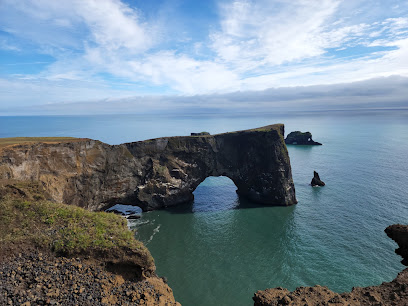
Hálsanefshellir Cave
Explore the enchanting Hálsanefshellir Cave, a stunning natural landmark near Vik, Iceland, showcasing unique geological formations and breathtaking views.
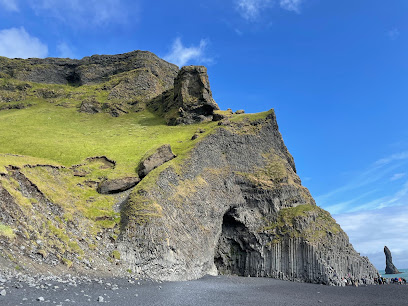
Restaurant Suður-Vík
Experience the authentic taste of Iceland at Restaurant Suður-Vík in the stunning village of Vik, where local ingredients meet breathtaking views.
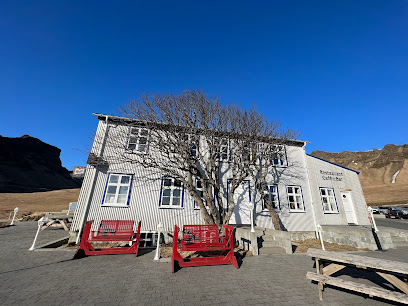
Lava Show in Vík
Witness the breathtaking spectacle of volcanic lava flows at Lava Show in Vík, a must-see attraction for all Iceland travelers and adventure seekers.
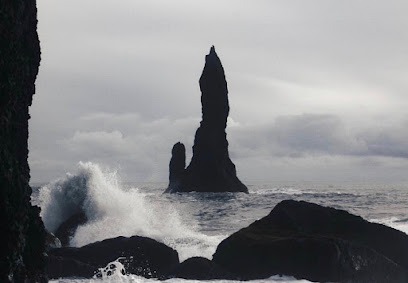
Halldórskaffi
Experience authentic Icelandic cuisine at Halldórskaffi, where local flavors and stunning views create an unforgettable dining experience in Vík.
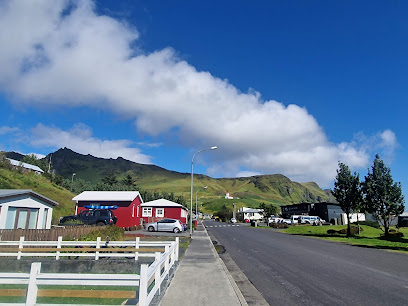
Vík i Myrdal Church
Discover the stunning Vik i Myrdal Church, a captivating Lutheran church with breathtaking views and rich cultural heritage in Iceland's picturesque Vik.
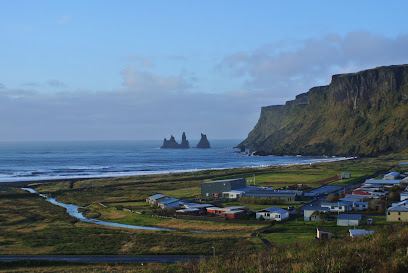
Katlatrack
Discover the magic of Iceland's glaciers with Katlatrack, your expert guide to stunning landscapes and unforgettable adventures.

Reynisfjara Black Sand Beach
Discover the enchanting Reynisfjara Black Sand Beach, where black sands meet dramatic sea stacks and the breathtaking beauty of Iceland's coastline awaits.
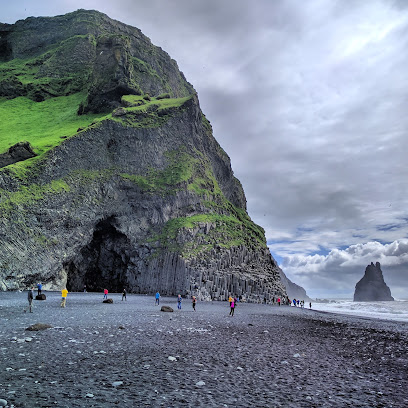
Puffin Hotel Vík
Experience the charm of Puffin Hotel Vík, your perfect base for exploring Iceland's stunning landscapes and natural wonders.

Dyrhólaey Viewpoint
Experience the stunning vistas and natural beauty at Dyrhólaey Viewpoint, a must-visit destination on Iceland's southern coast.
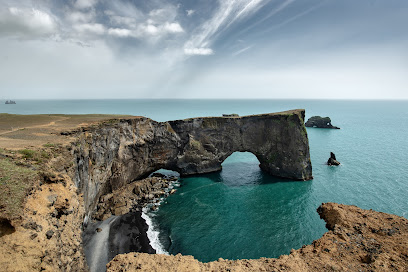
Guesthouse Carina
Discover the charm of Vik at Guesthouse Carina, your cozy lodging in the heart of Iceland's stunning landscapes.

Vík Horse Adventure
Explore Iceland's breathtaking landscapes on horseback with Vík Horse Adventure, a premier tour operator in the stunning village of Vík.
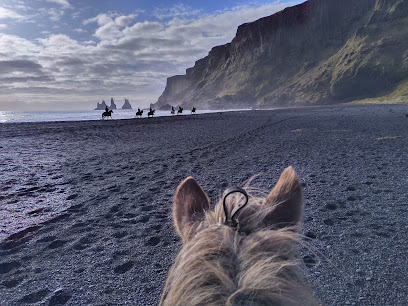
Vík HI Hostel
Discover the beauty of Iceland from Vík HI Hostel, the ideal self-catering accommodation for adventurers and nature lovers.

Wok In Vík
Experience the vibrant flavors of Asia at Wok In Vík, where culinary artistry meets Icelandic charm for an unforgettable dining adventure.
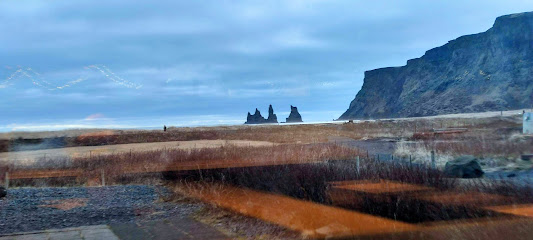
Vík Swimming Pool
Experience relaxation in the warm waters of Vík Swimming Pool, surrounded by breathtaking Icelandic landscapes.
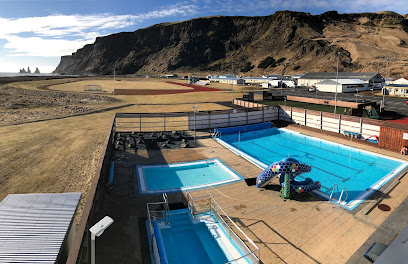
Unmissable attractions to see
Skógafoss
Discover the breathtaking Skógafoss waterfall in Iceland, a natural wonder showcasing stunning views and rich Viking folklore.
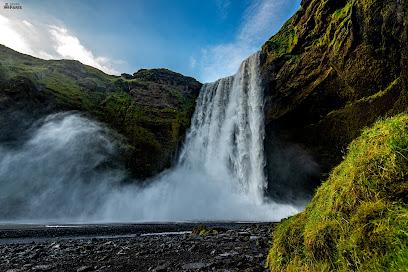
Reynisfjara Beach
Explore the breathtaking beauty of Reynisfjara Beach, Iceland's iconic black sand beach with stunning basalt columns and dramatic sea stacks.
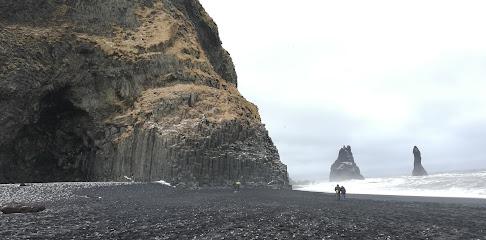
Dyrhólaey
Explore the stunning cliffs and rich birdlife of Dyrhólaey, one of Iceland's most breathtaking natural preserves and historical landmarks.
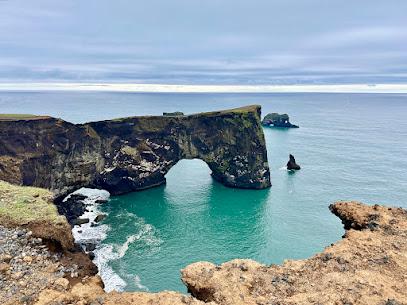
Dyrhólaey Lighthouse
Explore the breathtaking vistas and natural beauty of Dyrhólaey Lighthouse, a must-see attraction on Iceland's southern coast.
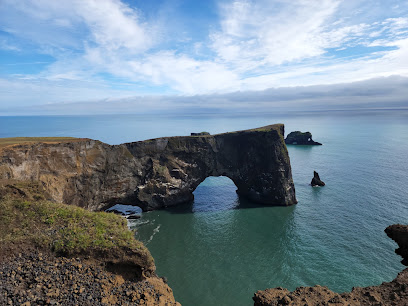
Hálsanefshellir Cave
Discover the stunning beauty and geological wonder of Hálsanefshellir Cave near Vik, a captivating destination for all nature lovers.
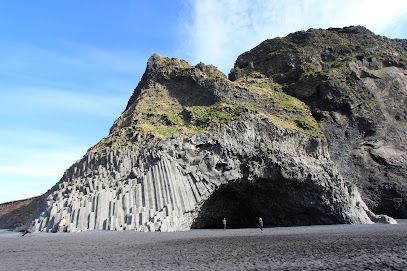
Víkurfjara Black Sand Beach
Explore the enchanting Víkurfjara Black Sand Beach, a stunning natural wonder in Iceland, known for its dramatic landscapes and unique black sands.
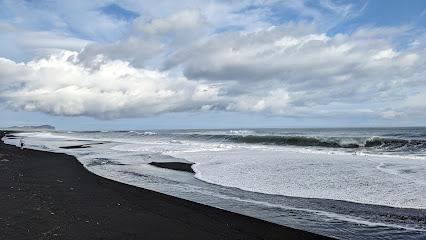
Lava Show in Vík
Discover the Lava Show in Vik, Iceland, where volcanic power comes alive in a breathtaking and educational experience for all ages.
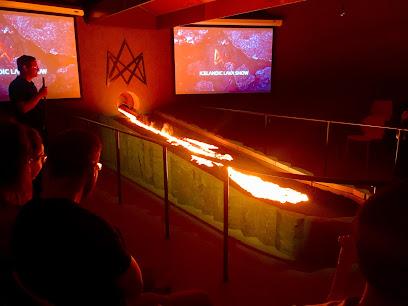
Víkurfjara Black Sand Beach
Explore the stunning black sands and dramatic coastal views at Vík's Víkurfjara Black Sand Beach, an unforgettable natural wonder.
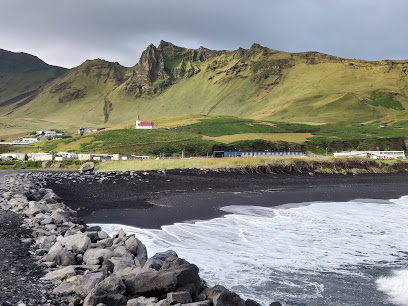
Skógar Museum
Explore Iceland's heritage at Skógar Museum, where history meets breathtaking landscapes and cultural treasures come alive.

Solheimasandur Plane Wreck
Explore the haunting beauty of the Solheimasandur Plane Wreck, an iconic site on Iceland's South Coast surrounded by stunning landscapes.
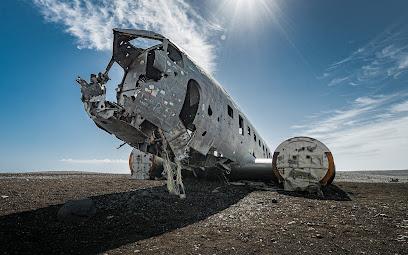
Vík i Myrdal Church
Experience the captivating beauty and tranquility of Vík i Myrdal Church, a cherished landmark in Iceland's stunning southern region.
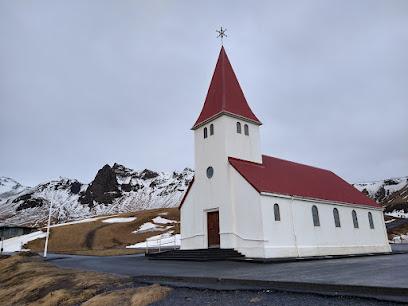
Yoda Cave
Discover the enchanting Yoda Cave in Iceland, where nature's artistry meets local folklore amidst breathtaking landscapes.
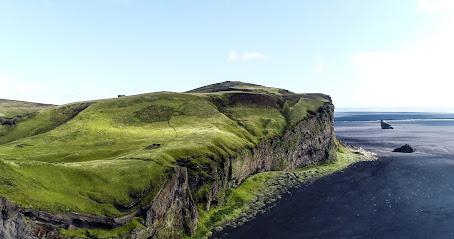
Icewear / Vík Wool
Discover the essence of Icelandic craftsmanship at Icewear, your go-to destination for quality wool clothing and outdoor gear in Vík.
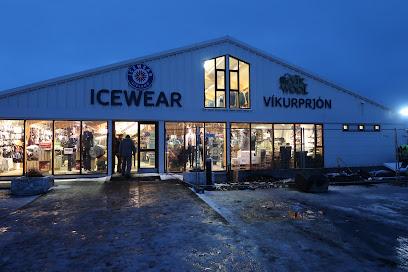
Reynisdrangar Cliffs
Explore the breathtaking Reynisdrangar Cliffs, where nature's beauty meets legendary folklore along Iceland's stunning coastline.
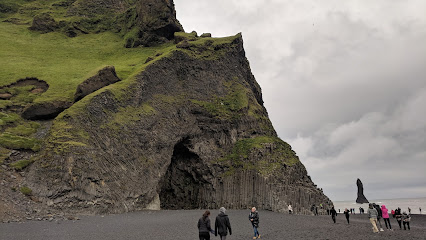
Eyjafjallajökull Erupts
Experience the awe-inspiring Eyjafjallajökull, a captivating blend of volcanic beauty and Icelandic history, perfect for nature lovers and adventure seekers.
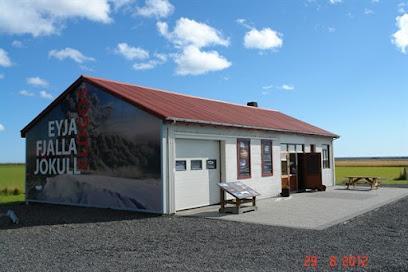
Essential places to dine
The Soup Company
Discover the heartwarming flavors of Iceland at The Soup Company in Vik – where every bowl tells a story.

Restaurant Suður-Vík
Experience authentic Icelandic cuisine at Restaurant Suður-Vík in Vík – where local flavors meet stunning scenery.
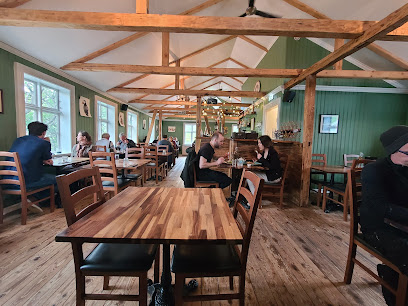
Black Crust Pizzeria
Experience the best of Icelandic flavors at Black Crust Pizzeria in Vik - where every pizza tells a delicious story.
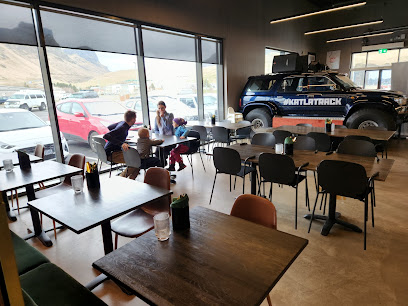
Smiðjan Brugghús
Discover the flavors of Iceland at Smiðjan Brugghús – where craft beer meets delicious cuisine in Vík's cozy atmosphere.
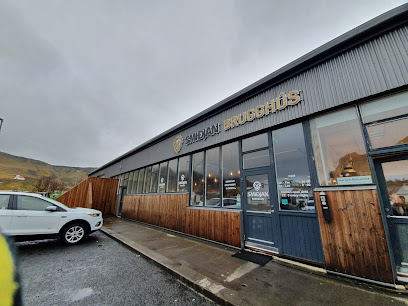
Halldórskaffi
Discover Halldórskaffi: A Cozy Restaurant Serving Authentic Icelandic Cuisine Surrounded by Breathtaking Landscapes.
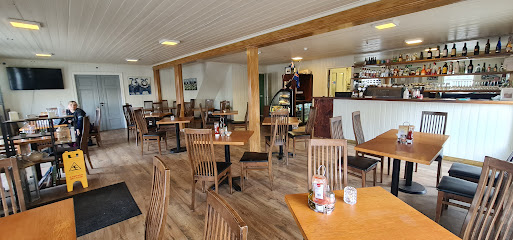
Black Beach Restaurant
Experience culinary excellence at Black Beach Restaurant in Vik, where local flavors meet breathtaking views on Iceland's stunning black sand beaches.
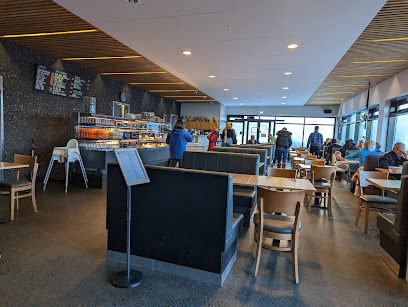
Skool Beans micro roaster… and sometimes a cat!
Discover Skool Beans in Vík: A delightful micro roaster offering artisanal coffee, fresh pastries, books & a cozy atmosphere perfect for relaxation.
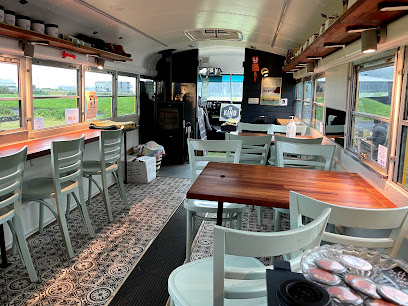
Ströndin • Pub
Experience authentic Icelandic cuisine at Ströndin Pub in Vik – where warmth meets deliciousness.
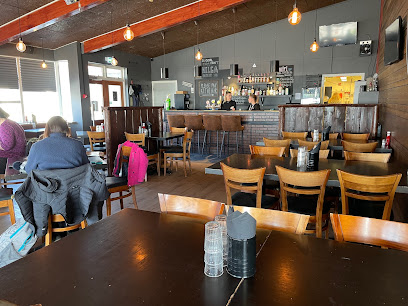
Hótel Kría
Discover Hótel Kría: A perfect blend of comfort and local charm in Vík, Iceland's scenic South Coast.

Hótel Vík
Discover Hótel Vík: A perfect blend of comfort and culinary excellence amidst Iceland's stunning landscapes.

Ice Cave Bistro
Experience authentic Icelandic cuisine at Ice Cave Bistro in Vík - a cozy bistro perfect for travelers seeking comfort and flavor.
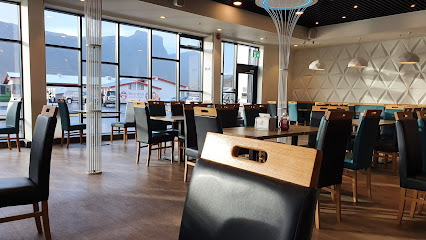
Lava Bakery and Coffee
Indulge in freshly baked treats and aromatic coffee at Lava Bakery and Coffee in Vik – your cozy retreat amidst Iceland's natural wonders.
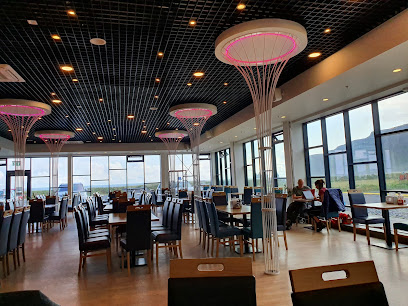
Crepes.is
Experience delicious crepes with stunning views at Crepes.is in Vík, Iceland - a culinary gem for every traveler.
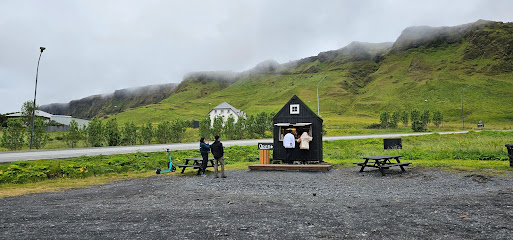
Wok In Vík
Discover authentic Vietnamese flavors at Wok In Vík, where Asian cuisine meets Icelandic charm in a delightful dining experience.

Víkurskáli
Experience authentic Icelandic treats at Víkurskáli in Vík – home to delightful ice cream and warm hospitality amidst stunning landscapes.
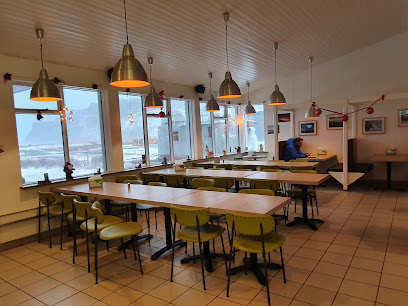
Markets, malls and hidden boutiques
The Soup Company
Experience the warmth and comfort of Icelandic cuisine at The Soup Company, where hearty soups and local flavors await in the heart of Vik.
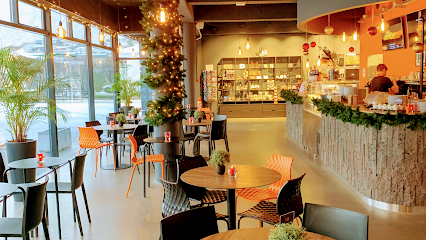
Víkurfjara Black Sand Beach
Discover the enchanting Víkurfjara Black Sand Beach, a breathtaking landscape of black sands, basalt columns, and dramatic sea stacks in Iceland.
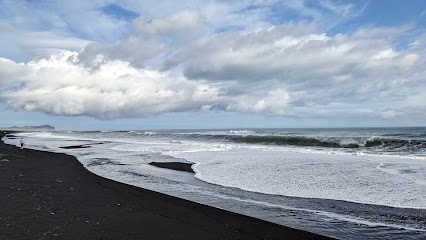
Black Crust Pizzeria
Discover the best artisanal pizzas in Vik at Black Crust Pizzeria, where every bite is a taste of Iceland's culinary charm.
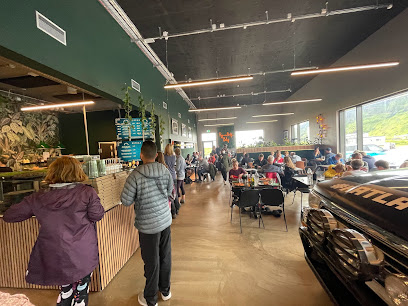
Lava Show in Vík
Discover the Lava Show in Vík, an unforgettable experience showcasing the power of volcanic activity in a thrilling and educational setting.
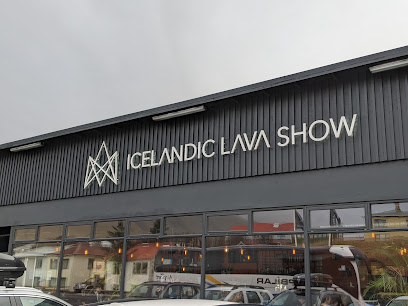
Smiðjan Brugghús
Discover the flavors of Iceland at Smiðjan Brugghús, Vík's delightful restaurant and brewery offering local cuisine and craft beers.
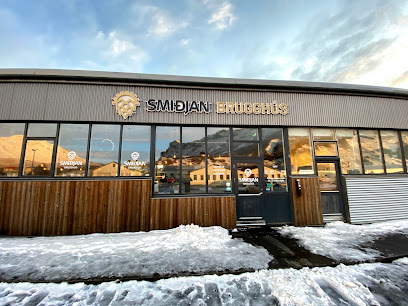
Halldórskaffi
Experience the heart of Icelandic cuisine at Halldórskaffi in Vík, where local flavors meet warm hospitality.
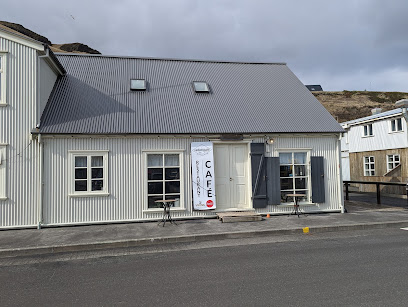
Krónan
Explore Krónan in Vik, your essential supermarket for groceries, local delicacies, and all your travel needs in Iceland.
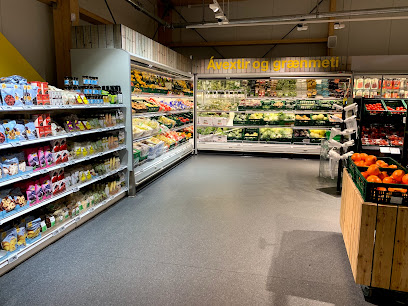
Skool Beans micro roaster… and sometimes a cat!
Discover the charm of Skool Beans in Vík, where artisan coffee, delicious pastries, and a cozy bookstore await every traveler.
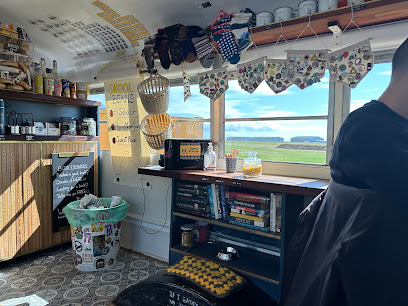
Vík i Myrdal Church
Explore the serene beauty of Vík i Myrdal Church, an iconic Lutheran church offering stunning views and a peaceful retreat in Iceland's captivating landscapes.
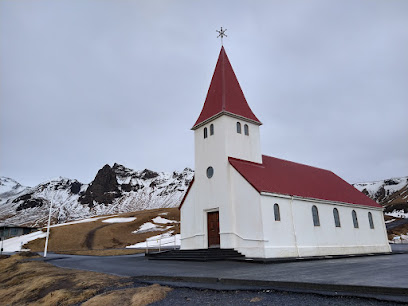
Icewear / Vík Wool
Explore authentic Icelandic wool products at Icewear / Vík Wool, your go-to shop for outdoor clothing and unique souvenirs in Vík.
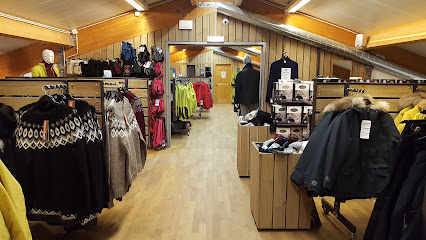
Ice Cave Bistro
Discover the delightful flavors of Iceland at Ice Cave Bistro, a cozy dining spot in beautiful Vik, perfect for travelers seeking local cuisine.
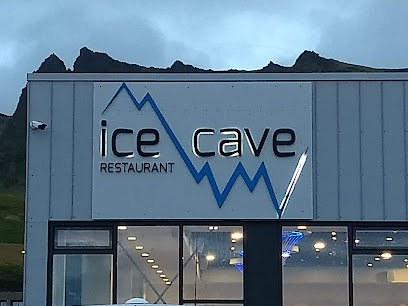
Lava Bakery and Coffee
Experience the warmth of Icelandic hospitality at Lava Bakery and Coffee, where fresh pastries meet enchanting landscapes in Vík.
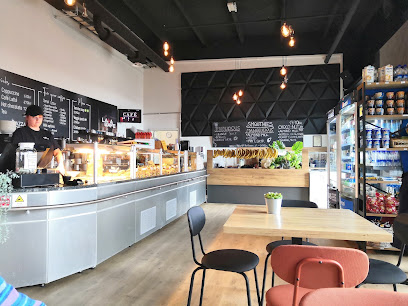
Crepes.is
Discover the best crepes in Vík, Iceland, at Crepes.is, where flavor meets convenience in a cozy atmosphere.
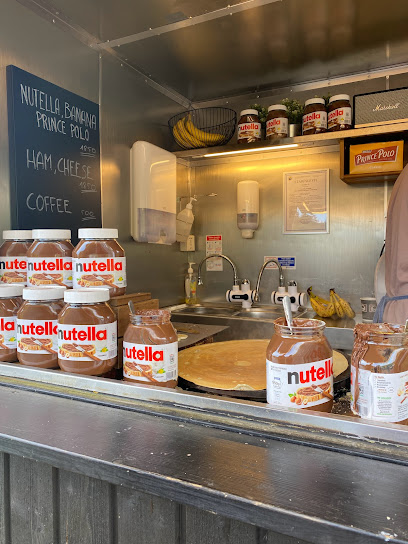
Wok In Vík
Discover the flavors of Vietnam at Wok In Vík, an Asian restaurant offering a unique fusion experience in the heart of Iceland's stunning landscapes.
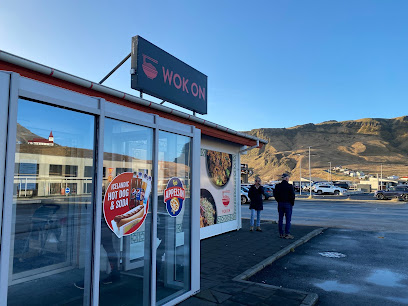
N1
Discover the essential convenience of N1 in Vík, where travelers fuel up for Iceland's stunning adventures with local snacks and friendly service.
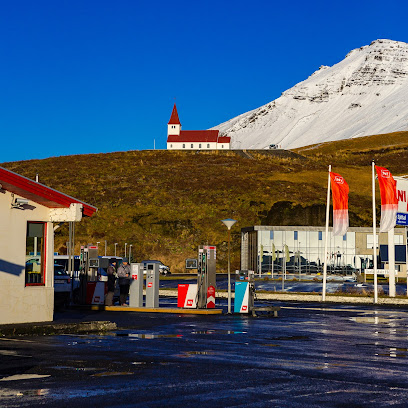
Essential bars & hidden hideouts
The Soup Company
Discover the heartwarming flavors of Iceland at The Soup Company in Vik - the perfect stop for travelers seeking comfort in a bowl.
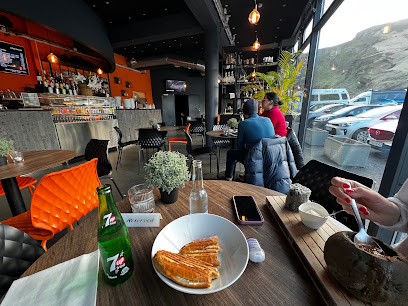
Restaurant Suður-Vík
Savor the essence of Icelandic cuisine at Restaurant Suður-Vík, where traditional flavors meet stunning coastal views in Vík.
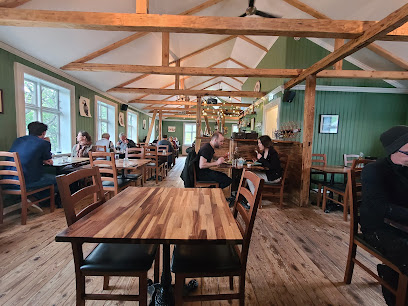
Black Crust Pizzeria
Experience unique pizza creations at Black Crust Pizzeria in Vik, Iceland, where local ingredients meet stunning landscapes.
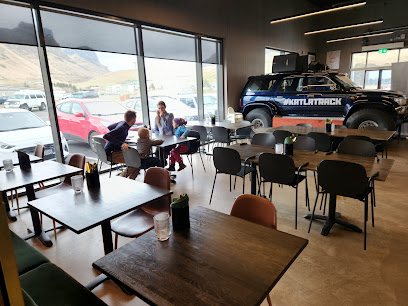
Smiðjan Brugghús
Discover Smiðjan Brugghús, Vík's charming brewpub offering delicious craft beer, mouthwatering grilled dishes, and a cozy atmosphere.
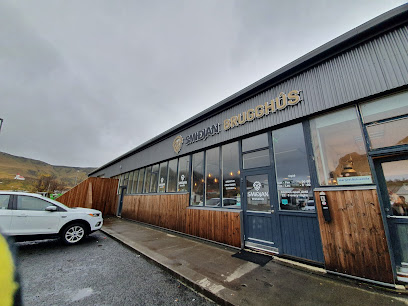
Halldórskaffi
Experience authentic Icelandic cuisine at Halldórskaffi in Vik – where local flavors meet a cozy atmosphere.
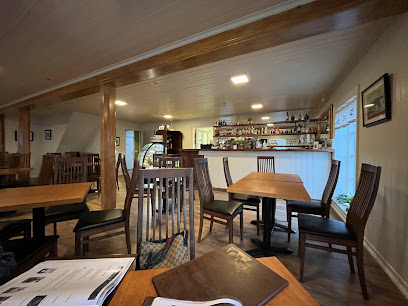
Black Beach Restaurant
Discover a delightful dining experience at Black Beach Restaurant, where scrumptious cuisine meets breathtaking views near Reynisfjara beach.
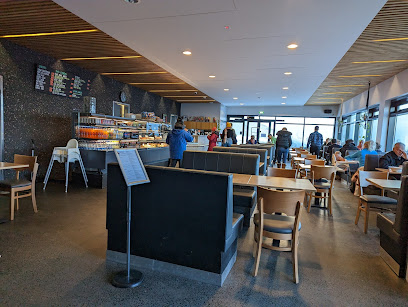
Skool Beans micro roaster… and sometimes a cat!
Discover the charm of Skool Beans in Vik: a micro roaster, bookstore, and cozy café with delightful treats and a resident cat.
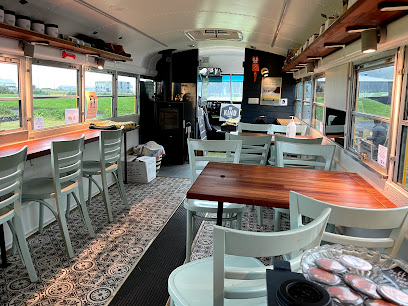
Ströndin • Pub
Experience the warmth of Icelandic hospitality at Ströndin Pub in Vík, where local flavors and vibrant atmosphere come together.
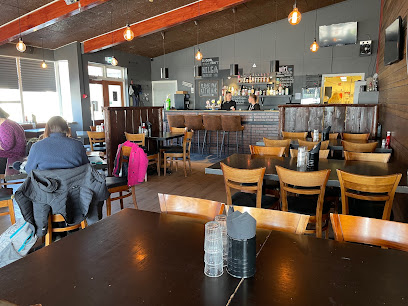
Hótel Kría
Discover the beauty of Vík at Hótel Kría, a charming hotel offering a delightful bar and restaurant experience amidst stunning Icelandic landscapes.

Hótel Vík
Discover the charm of Hótel Vík, where comfort meets stunning Icelandic landscapes and delightful local cuisine.

Ice Cave Bistro
Experience the flavors of Iceland at Ice Cave Bistro, a charming eatery in Vik offering local dishes amidst breathtaking landscapes.
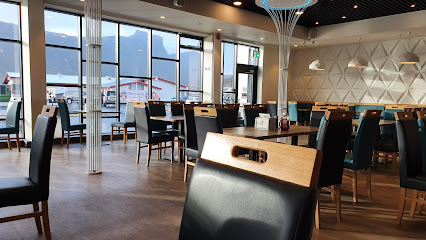
Lava Bakery and Coffee
Discover the unique flavors of Iceland at Lava Bakery and Coffee, a cozy spot in Vík offering delicious pastries and exceptional coffee.
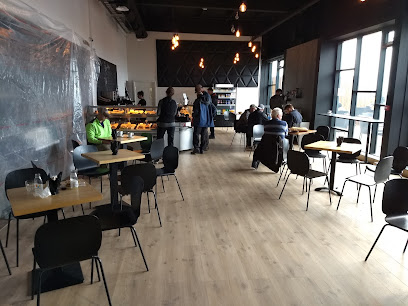
Crepes.is
Experience the best sweet and savory crepes in Vík, Iceland, at Crepes.is—where flavor meets breathtaking landscapes.

Wok In Vík
Discover a unique blend of authentic Asian flavors at Wok In Vík, where fresh ingredients meet Icelandic charm.
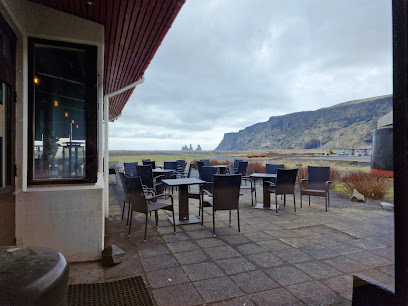
Víkurskáli
Discover local flavors and unique souvenirs at Víkurskáli, the charming store in the heart of Vík, Iceland.
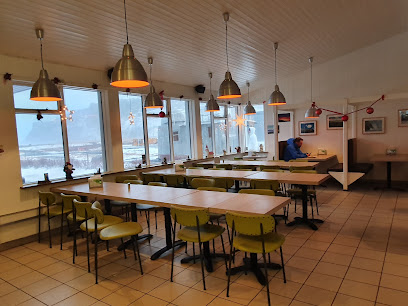
Travel experiences inspired by this city
Explore more travel diariesLocal Phrases
-
- HelloHalló
[HAH-loh] - GoodbyeBless
[bless] - YesJá
[yah] - NoNei
[nay] - Please/You're welcomeTakk fyrir
[tahk feer-ir] - Thank youTakk
[tahk] - Excuse me/SorryFyrirgefðu
[feer-ir-gef-thu] - How are you?Hvað segir þú?
[kvath se-yir thoo] - Fine. And you?Það er allt í lagi. En þú?
[thath er alt ee lahy. en thoo] - Do you speak English?Talar þú ensku?
[ta-lar thoo ens-koo] - I don't understandÉg skil ekki
[yeh skil ehk-ki]
- HelloHalló
-
- I'd like to see the menu, pleaseÉg ætla að skoða matseðilinn, takk
[yeh ait-la ath sko-tha mat-se-thil-inn, tahk] - I don't eat meatÉg borða ekki kjöt
[yeh bor-tha ehk-ki chot] - Cheers!Skál!
[skowl] - I would like to pay, pleaseÉg væri til í að borga, takk
[yeh vye-ri til ee ath bor-gah, tahk]
- I'd like to see the menu, pleaseÉg ætla að skoða matseðilinn, takk
-
- Help!Hjálp!
[hyowlp] - Go away!Farðu í burtu!
[far-thu ee bur-thu] - Call the Police!Hringdu í lögregluna!
[hring-thu ee lor-eg-lu-na] - Call a doctor!Hringdu í lækni!
[hring-thu ee laik-ni] - I'm lostÉg er týndur
[yeh er teen-thur] - I'm illÉg er veikur
[yeh er vai-kur]
- Help!Hjálp!
-
- I'd like to buy...Ég ætla að kaupa...
[yeh ait-la ath koy-pa...] - I'm just lookingÉg er bara að skoða
[yeh er bara ath sko-tha] - How much is it?Hvað kostar það?
[kvath kos-tar thath] - That's too expensiveÞað er of dýrt
[thath er ov deert] - Can you lower the price?Getur þú lækkat verðið?
[ge-tur thoo lai-kat ver-thith]
- I'd like to buy...Ég ætla að kaupa...
-
- What time is it?Hvað er klukkan?
[kvath er kloo-kahn] - It's one o'clockKlukkan er eitt
[kloo-kahn er ait] - Half past (10)Hálft (10)
[hawlfst] - MorningMorgunn
[mor-gun] - AfternoonSíðdegis
[seeth-deh-ghis] - EveningKvöld
[kvohld] - YesterdayÍ gær
[ee gai-r] - TodayÍ dag
[ee dahg] - TomorrowÁ morgun
[ow mor-gun] - 1Eitt
[ait] - 2Tvö
[tvo] - 3Þrjú
[thryoo] - 4Fjögur
[fyoh-gur] - 5Fimm
[fim] - 6Sex
[sehx] - 7Sjö
[syo] - 8Átta
[ow-tha] - 9Níu
[nee-oo] - 10Tíu
[tee-oo]
- What time is it?Hvað er klukkan?
-
- Where's a/the...?Hvar er...
[kvar er] - What's the address?Hvað er heimilisfangið?
[kvath er heim-il-is-fan-gith] - Can you show me (on the map)?Getur þú sýnt mér (á kortinu)?
[ge-tur thoo seent mehr (ow kort-inn-oo)] - When's the next (bus)?Hvenær kemur næsti (strætisvagn)?
[kven-ayr keh-mur nai-sti (strai-tis-vagn)] - A ticket (to ....)Einn miði (til ....)
[aitn mid-i (til)]
- Where's a/the...?Hvar er...
History of Vik
-
Vik í Mýrdal, commonly known as Vik, is a picturesque village with a history that dates back to the Icelandic Settlement Era in the late 9th century. The area was initially settled by Norse explorers who were drawn to its fertile lands and abundant natural resources. The first settlers established farms, which became the backbone of the local economy for centuries.
-
One of the most iconic landmarks in Vik is its church, Víkurkirkja, which was built in 1934. Perched on a hill overlooking the village, the church is a symbol of resilience and faith for the local community. It was designed to withstand volcanic eruptions and floods, serving as a safe haven for residents during natural disasters.
-
The Katla volcano, located beneath the Mýrdalsjökull glacier, has had a significant impact on Vik's history. Katla is one of Iceland's most active and feared volcanoes, with its last major eruption occurring in 1918. The volcanic activity has shaped the landscape and influenced the development of the village. Local legends and folklore are filled with stories about Katla's eruptions and their effects on the community.
-
Christianity was officially adopted in Iceland around the year 1000, and Vik was no exception to this religious transformation. The introduction of Christianity brought about significant cultural changes, including the construction of churches and the establishment of new traditions. The local population gradually shifted from their pagan beliefs to embrace the Christian faith, which has had a lasting influence on the village's culture and heritage.
-
Fishing has been a vital part of Vik's economy for centuries. The village's proximity to the Atlantic Ocean made it an ideal location for fishing, and the industry flourished, especially during the 19th and early 20th centuries. Fishermen from Vik were known for their skills and bravery, often venturing into treacherous waters to secure a bountiful catch. The fishing industry not only sustained the local economy but also shaped the cultural identity of the community.
-
In recent decades, Vik has transformed into one of Iceland's most popular tourist destinations. The village's stunning black sand beaches, dramatic cliffs, and unique geological formations attract visitors from all over the world. Tourism has brought economic prosperity and new opportunities for the residents of Vik, while also presenting challenges related to conservation and sustainable development. The village has embraced its role as a tourist hotspot, offering a range of services and activities that showcase its natural beauty and rich cultural heritage.
Vik Essentials
-
Vik is located on the southern coast of Iceland, approximately 180 kilometers (112 miles) from Reykjavik. The most common way to reach Vik is by car. You can rent a car in Reykjavik and drive along Route 1 (the Ring Road), which takes about 2.5 to 3 hours. Alternatively, you can take a bus from Reykjavik to Vik; the journey typically takes around 3 to 3.5 hours. During the summer months, there are also organized tours that include Vik as a stop.
-
Vik is a small village, and most of its attractions are within walking distance. For exploring the surrounding areas, renting a car is highly recommended. There are also local bus services that connect Vik with nearby towns and attractions. Taxis are available but might be expensive due to the remote location. Biking is another option for those who enjoy cycling, especially during the summer months.
-
The official currency in Iceland is the Icelandic Krona (ISK). Credit and debit cards are widely accepted in Vik, including in restaurants, shops, and hotels. However, it is advisable to carry some cash for smaller establishments and rural areas where card payments might not be accepted. ATMs are available in Vik, so you can withdraw cash if needed.
-
Vik is generally a safe destination for tourists. There are no specific high-crime areas targeting tourists, but it is always wise to take standard precautions. Keep an eye on your belongings, especially in crowded places like popular tourist spots. Be cautious when visiting natural attractions, as the weather can be unpredictable, and the terrain can be challenging.
-
In case of emergency, dial 112 for immediate assistance. Vik has a small medical clinic, but for serious medical issues, you may need to be transported to a larger hospital in Reykjavik. It is highly recommended to have travel insurance that covers medical emergencies. For minor health issues, there are pharmacies where you can purchase over-the-counter medications.
-
Fashion: Do dress in layers and be prepared for changing weather conditions. Waterproof clothing is a must. Avoid wearing high heels or non-supportive shoes when exploring natural sites. Religion: Do respect local customs and traditions. While Iceland is largely secular, respect any religious sites you visit. Public Transport: Do be respectful and give up your seat to elderly passengers. Don't eat or drink on public transport. Greetings: Do greet people with a friendly 'hello' or 'hæ' (hi in Icelandic). A handshake is also common. Eating & Drinking: Do try local delicacies and be open to new culinary experiences. Don't leave a large tip, as service charges are usually included in the bill.
-
To experience Vik like a local, visit the local bakery for freshly baked goods and traditional Icelandic treats. Engage with locals, as they are friendly and often willing to share insights about the area. Don't miss the black sand beaches and the famous Reynisfjara beach with its basalt columns. For a unique experience, hike to the top of Reynisfjall mountain for stunning views of the coastline.
Nearby Cities to Vik
-
Things To Do in Selfoss
-
Things To Do in Hveragerdi
-
Things To Do in Hafnarfjordur
-
Things To Do in Kopavogur
-
Things To Do in Reykjavik
-
Things To Do in Grindavik
-
Things To Do in Keflavik
-
Things To Do in Borgarnes
-
Things To Do in Akureyri
-
Things To Do in Blonduos
-
Things To Do in Stykkisholmur
-
Things To Do in Saudarkrokur
-
Things To Do in Olafsvik
-
Things To Do in Dalvik
-
Things To Do in Egilsstadir















